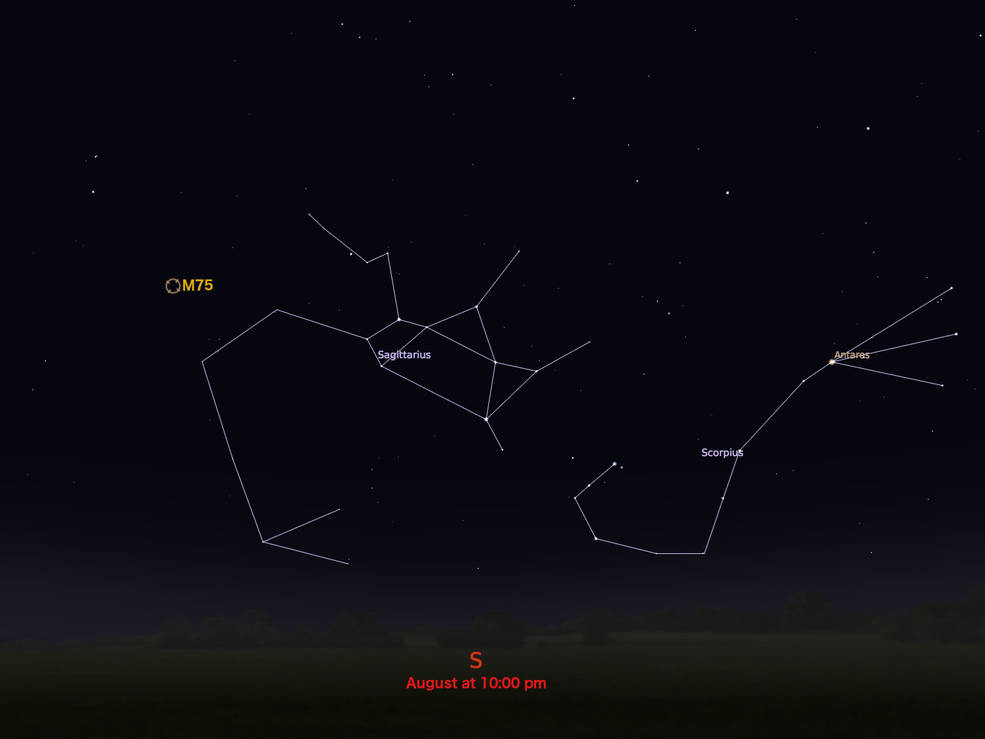The Milky Way Ate This Star Cluster Billions of Years Ago
The Hubble Space Telescope has captured a radiant picture of the globular cluster Messier 75 (M75), which was published by NASA on Friday.
Taken with Hubble's Wide Field and Planetary Camera 2 and the Wide Field Camera 3, the composite image may help astronomers detect signs of middle-sized black holes in the cluster.
M75, also known as NGC 6864, is a spherical bundle containing an estimated 400,000 stars, making it one of the densest-known star clusters.
Skywatchers can catch a glimpse of it using binoculars-it appears as a star itself-though it takes a telescope to make out individual stars.
 Position of M75 relative to Sagittarius. Image: Stellarium
Position of M75 relative to Sagittarius. Image: StellariumThe cluster is positioned just beyond the stars that sketch out the rump of a horse in the constellation Sagittarius.
M75 is one of several globular clusters that belong to the magnificently named "Gaia Sausage." Scientists think this structure might be the remains of a dwarf galaxy that the Milky Way ate about eight to ten billions years ago, according to a 2018 study in the Astrophysical Journal Letters.
The partially digested galaxy got its name from the European Gaia mission that has helped map it, and the elongated sausage-shaped orbit its remains now take around the galactic core.
Though it's located 67,000 light years away from Earth, which is over half the width of the Milky Way, M75 is so luminous that it was first spotted in 1780 by the French astronomer Pierre Mi(C)chain, before the advent of modern multi-meter telescopes.
Our galaxy has consumed many smaller entities over its lifespan, but the Gaia Sausage is a big banger, with an estimated mass 10 billion times that of the Sun. As a result, the merger had an impact on the formation of the Milky Way, perhaps fracturing its disk and contributing to the bulge around the central supermassive black hole.
As it turns out, when the Milky Way eats a big hot dog, it gets heavier around the middle, too.
Get six of our favorite Motherboard stories every dayby signing up for our newsletter.